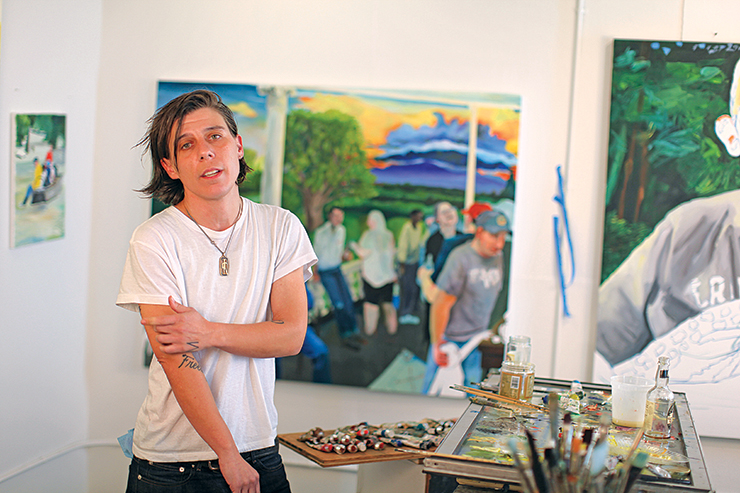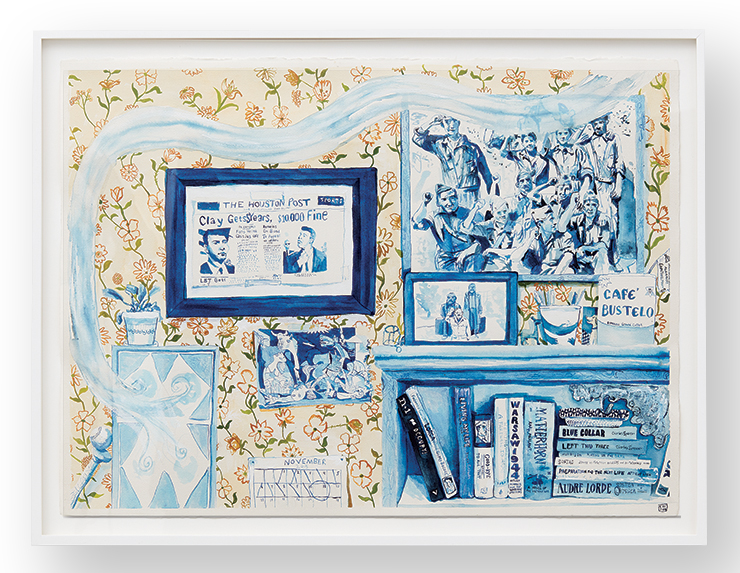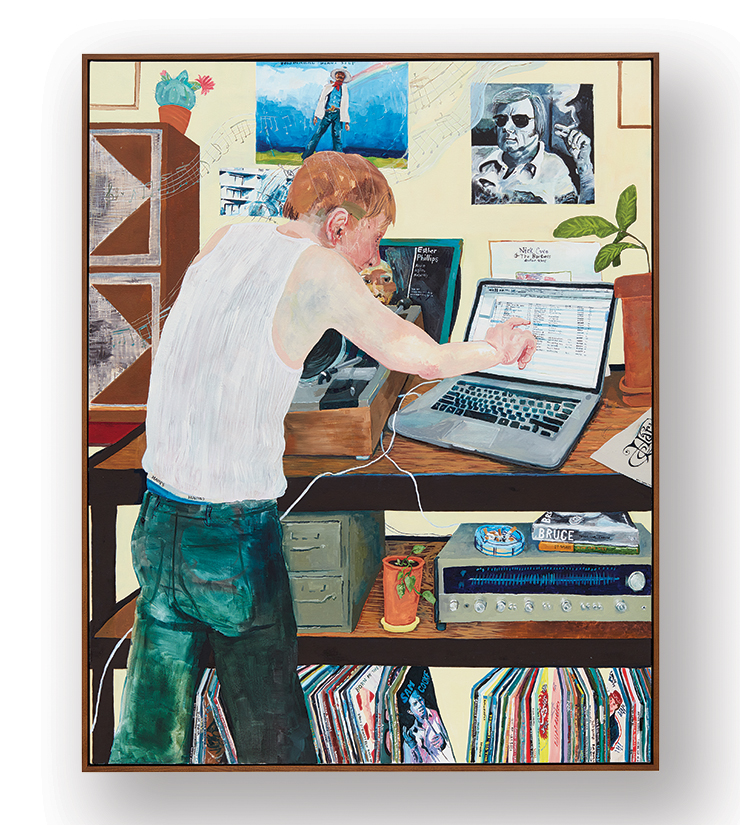
When I stop into the Chinatown studio that Los Angeles gallerist Nino Mier keeps for his artists, Celeste Dupuy-Spencer is working on a big still life painting composed of several parts: a newspaper clipping of Muhammad Ali’s dissent of the Vietnam war draft, a recreation of Picasso’s Guernica, and books on a shelf including “Matterhorn: A Novel of the Vietnam War” and “Preparation for the Next Life,” a work of fiction by Atticus Lish set on the outskirts of the Iraq war.
“It’s almost like a syllabus,” says Dupuy-Spencer. “For us here living in L.A., if we don’t have the impulse to look into the war or read about it, we could go through our entire lives here and really just never think about it. And that’s sort of wonderful but the fact is we’re Americans, and I feel like we need to remember that we’re a brutal, terrorist country.”

It is Dupuy-Spencer’s first work about war, and it is one new painting she is creating for her participation in the 2017 Whitney Biennial, which is on view from March 17 to June 11. The Hudson Valley-born artist moved to L.A. two years ago after a decade in New York City and promptly held a show of drawings at Eve Fowler’s Artist Curated Projects. Mier reps Fowler, and he was “blown away” by Dupuy-Spencer’s work. Soon her paintings and drawings hung on the wall of his gallery and a visit from Biennial curators Christopher Y. Lew and Mia Locks followed.

“Something really magical is happening here,” says Dupuy-Spencer, who is also preparing a group show for Berlin’s Galerie Max Hetzler, and solo shows for Chicago’s Shane Campbell Gallery and Mier after the Biennial. “This is not what I expected my life to be but the facts of my life are awesome. The Biennial curators called me on the phone to tell me, and I was trying to be really cool about it. I’m all like, ‘Thank you very much,’ but then I was basically screaming, ‘Oh my god!’”
Mier touts the artist’s ability to convey honesty in her work as what originally attracted him to Dupuy-Spencer. Her paintings of Upstate New York life—a subject matter she often returns to—contain people from all socioeconomic scenarios, each given their own respect and honor through tender rendering. “Her work contains lessons about society or culture,” says Mier. “Besides the craft—she’s an amazing painter—it’s much more about things that I just don’t know about: subcultures, the Hudson Valley, New Orleans.” It’s fair-handed, slice-of-life painting, but it’s not as dark as it could be, according to Mier. “She had this drawing of a Trump rally in our 2016 show [“Trump Rally (and Some of Them I Assume are Good People)”] but within the disgust in the commentary is humor,” says Mier. “She looks at the positive in everything.”










 in your life?
in your life?

